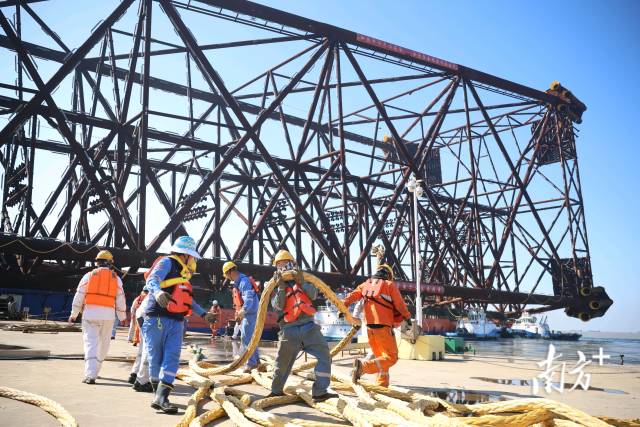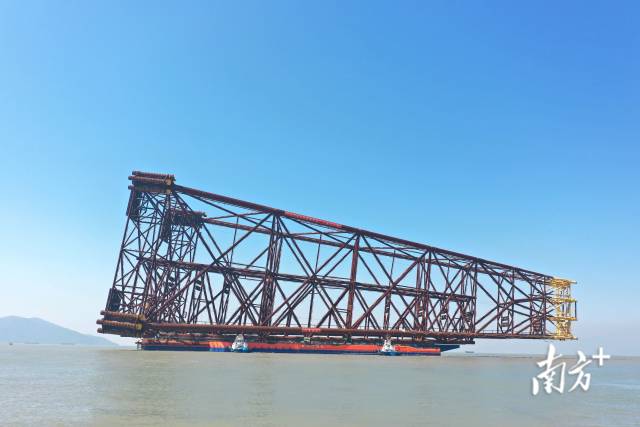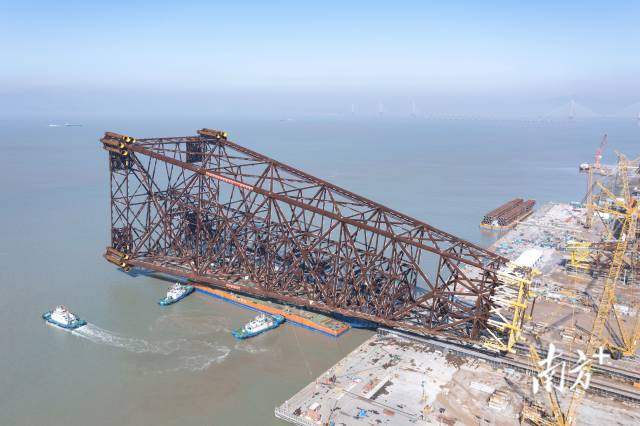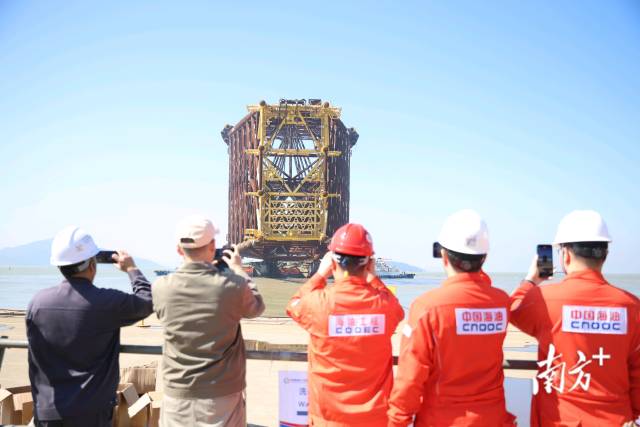On March 12, China National Offshore Oil Corporation (CNOOC) announced that "Haiji-2", Asia's highest deep-water jacket designed and built independently by China, was completed at the Zhuhai Deepwater Equipment Manufacturing Base in Guangdong Province, setting a number of Asian records for structural height, weight, water depth, construction speed. This demonstrates that China's capacity to independently design and construct deep-water ultra-large jacket platforms has reached a world-class level.

The average water depth in the operation area of "Haiji-2" is about 324 meters, and the total height of the jacket is 338.5 meters, higher than China World Trade Center Tower 3 (330 meters) in Beijing. The total weight reaches 37,000 tons, and the amount of steel used is close to that of the National Stadium ("Bird's Nest") in Beijing. This reaches the capacity limit of domestic construction sites, transportation and installation equipment, and ships, causing a series of technical challenges, such as foundation settlement, large-scale lifting, weight and size control, ship transportation, and installation, and so on.

The project has utilized the complete set of independent design and construction technologies for the over-300-meter-deep water jacket and completed the construction in just 26 months, with the accuracy of critical dimensions controlled within 5 millimeters. The project has set a new record for the construction speed and accuracy of Asia's ultra-large deep-water jacket.

With the continuous development of marine oil and gas resources, waters at depths exceeding 200 meters have become an important battleground for China's marine oil and gas development. Wang Huoping, Director Engineer at CNOOC (Shenzhen) Deepwater Engineering Center, suggests that the application of the jacket platform at depths of over 300 meters, realized for the first time in China, can significantly reduce the costs of development, engineering, and production. Thus, there is the potential for the development of a great number of deep-water marginal oilfields, which has opened up a new way for the efficient development of oil and gas resources in China's medium and deep waters.

"Haiji-2" is scheduled to be installed at sea soon, and after completion, it will be put into use in the secondary development project of Liuhua 11-1/4-1 oilfield, China's first deep-water oilfield in the Pearl River Mouth Basin, which will bring new life to old billion-ton deep-water oilfields.
Editor丨Nan, Nina, Ge Yuting, James
Photo丨Nanfang Plus
















